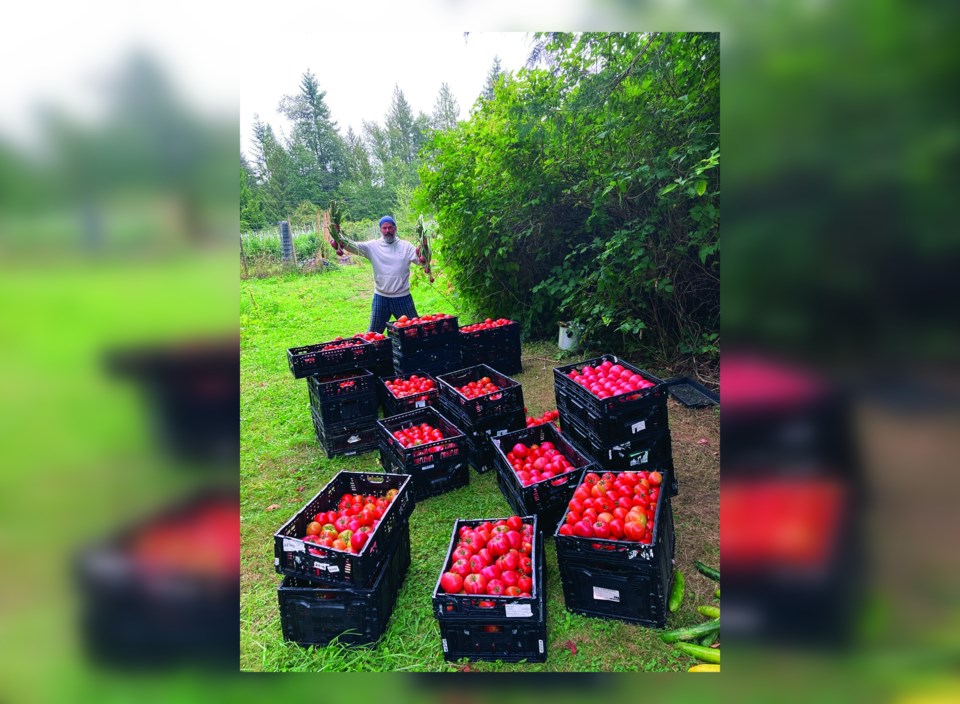If you know me, or read the Elphinstone Chronicles on occasion, you’ll know I work on my family farm at Henry Reed Produce. You’ll also know I enjoy nerding out over the history of the Sunshine Coast. If it were a Venn diagram, Elphinstone overlaps right between those two things making me very grateful to be able to write this column. You can watch these three fascinating topics collide in an enlightening presentation at the Elphinstone Community Association’s Feb. 21 monthly meeting at Frank West Hall.
Chris Basil of Bear Ranch will be coming in to give a presentation on farming in Elphinstone, both past and present. He gave me a sneak preview and you will be surprised by some of the facts he has uncovered. And I mean that in a good way,
I got an entirely new perspective on agriculture in Area E. “Of all the Areas in the SCRD, Elphinstone is by far the smallest,” Chris told me. “About half of Elphinstone is Rural Forest. Of the remaining, more than half is ALR, or locally zoned for agriculture. Farming, at least from provincial and district zoning, is the heart of Elphinstone.” And we’re not just talking about the jam factory, we’re talking about today.
You may remember Chris from my previous articles when we were battling Ministry of Transportation and Infrastructure and Capilano Highways over that massive hole that was collapsing Reed Road at the corner of Payne. Chris did extensive studies on waterflow in Area E to determine how this damage was being done to the road and his property, the home of Farmer Dan’s Family Farm, Bear Ranch. Last year his research and lobbying efforts, coupled with those of the Sunshine Coast Farmers’ Institute, were a driving force to help get the SCRD water bylaw amended. The bylaw now allows commercial food farms to use water like other commercial businesses when the next Stage 4 restrictions inevitably happen. Fearing for our livelihoods the last few years, many farmers have invested heavily in efficient irrigation such as drip tape, water tanks and ground wells; But farmers still struggle with trial and error, costs, and delays. This amendment definitely eases some anxiety. “Essentially, with that positive change for food farmers, we are now considered a small business, such as a restaurant, which can continue water use in Stage 4.”
If you are one of the ones asking what production… that will be part of the surprise in this presentation. “I think most people regard local food production as a nice thing, but not really significant,” observes Chris. Well guess what? He crunched some production numbers from local farms for 2023, and the scale of food production right here in Elphinstone is, indeed, quite significant. Commercial vegetable farms in Elphinstone represent the majority of commercial vegetable production in the whole SCRD, at around 62 per cent. Chris emphasized that “the present food farming footprint in Elphinstone is quite small. There is quite an opportunity to increase food production.” If you’re interested in getting your hands dirty, it could be your time to shine.
All this is just the teaser. If you want to learn the eye-opening story of food production in Elphinstone, check out the ECA meeting and head to their website for details. Not only will you have the chance to ask Chris some questions, but our fearless Area E leader, Donna McMahon, will be there to update us on the latest in our ‘hood.
I would love to hear feedback, take topic suggestions and hear from all 3,883 residents of Elphinstone. Email [email protected].



